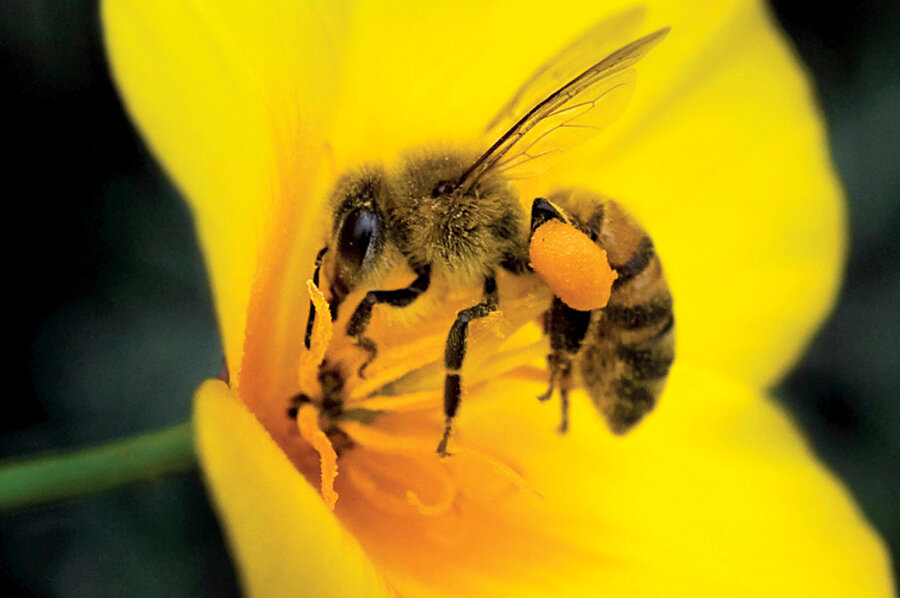Pleased with bees
Loading...
One spring Sunday I headed out to the back garden to check on a rambling rose. I stooped down and gingerly lifted one barbed branch. There, hovering at my feet were a few ground bees. I stood, hands on hips, contemplating the activity. It seemed early for ground bees. Then I looked up: Two paces from my face hung a massive swarm of bees. Definitely not ground bees. The teeming, two-foot mass was a perfect, heavy teardrop, hanging from the drooping limb of a neighbor's arborvitae. The outer bees hovered delicately over the inner core, an exquisite embodiment of surface cohesion.
Many people view swarms of bees as decidedly dangerous, perhaps murderous. Even the word "swarm" exudes a creepy sense of evil intent. My husband, John, is a biologist by training. His curiosity seems infinite, and he is free of such ignorant paranoias. He was thrilled. We tracked down a beekeeper.
Bob Fox arrived in a well-used truck. He brought what looked like a metal coffeepot with bellows (a smoker), a box of dried corncobs and kindling, leather gloves and netted headgear (which, on this day, he did not use), a long-handled brush, a metal hive tool, and a portable beehive wrapped in a tarp.
As Bob moved about, he kept up a low, calm patter. "You'd be amazed how many people call me with a swarm like this; and by the time I've come, they've destroyed the whole thing, down to the last bee." We all shook our heads.
Bob said this swarm was impressive, at about 15,000 bees. Methodically and quietly, he placed the portable hive below the hanging limb. The corncobs and kindling were put in the smoker and lit. Holding the spout of the smoker close to the swarm, Bob pumped the bellows. Smoke has a calming effect on bees. Bob said this group was already quite docile. They were heavy with honey, and their sole purpose was to hold the group together until they could find a new hive.
John clipped the limb above the swarm, and Bob gingerly laid it atop the hive. He continued to smoke the swarm and jostle the limb so the bees would fall into the hive. The bulk of bees would only relocate if the queen moved her court (yes, she has ladies in waiting that tend her every need). By dusk, most of the bees had disappeared into the hive.
"Well, it looks like we've got them all," I offered hopefully in Bob's direction. He paused. "If you don't mind, we'll wait a bit longer," he said. "They'll have sent out scouts, and I want to be sure we don't leave any behind." So we waited. And, lo and behold, scouts returned.
Honeybees often swarm as a natural part of hive progression. If the hive is healthy and productive, it will increase in population. Eventually the queen senses that it's time for the hive to split. She will lose weight so she can fly, then leave the hive with a large portion of the workers and drones. The bees left behind will scurry to hatch another queen and rebuild.
If one day you find a swarm of bees in your backyard, call a local beekeeper. Then sit back and enjoy the show. Get your camera, because you'll want to share this amazing phenomenon with everyone you know, especially children. And if you've gone this far, you might as well buy a hive of your own and order a batch of honeybees. We did.







